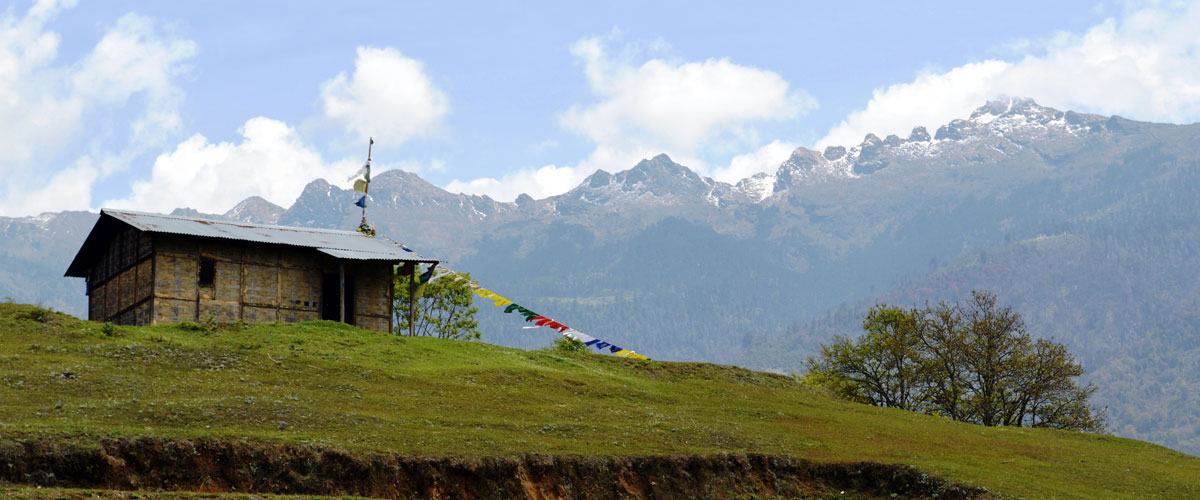
Wildlife Arunachal Pradesh
Pakhui Wildlife Sanctuary
Falling along the Tezpur-Tipi-Tezpur tourist circuit, the Pakhui Wildlife Sanctuary is one of the largest in Arunachal Pradesh. It is located in the East Kameng district with Forest Divisional Headquarters located at Seijosa, a small but beautiful sub-divisional administrative headquarter perched on the banks of the Pakhui (Pakke) River. Seijosa is a hotspot for picnickers. The wildlife sanctuary spreads over an area of 862 km2 and is a Project Tiger Reserve (Pakke Tiger Reserve). Some of the major wildlife species found in the sanctuary are tiger, elephant, leopard, gaur, samber and barking deer.
Daying Ering Wildlife Sanctuary
Spread over a cluster of river islands 13 km away from Pasighat, Daying Ering Wildlife Sanctuary is worth a visit. A cruise on the Siang River is the only means of reaching the unique eco-system which combines the terrestrial with the aquatic to form the natural habitat of different species of avifauna. Between the months of September and February, it annually attracts many migratory birds from Siberia and Mongolia such as cranes, wild ducks, storks and water fowl making the sanctuary a veritable magnet for both amateur and professional ornithologists. The forest islands are home to hog deer, hispid hare, wild buffalo, samber, elephants and other rainforest macro and micro fauna.
Mouling National Park (Jengging)
A 195 km drive from Pasighat takes one to Mouling National Park in the Upper Siang district. Spread over 483 km2 of lush verdure, it is home to rare wildlife species such as takin, serow, goral, clouded leopard and red panda. In the winter, it attracts a large number of migratory birds. The Dehang-Dibang Biosphere Reserve covers 5112 km2 in altitudes ranging from 500 to 16000 feet. The reserve has 8 forest types including sub-tropical broad leaved, sub-tropical pine, temperate broad-leaved, temperate conifer, sub-alpine scrubs, alpine pastures, bamboo groves and grasslands. It has been recognised as one of the 18 bio-diversity hotspots of the world.
The Gelling-Tuting-Singa triangle constitutes the 'Pemako Zone' of the Tibetan form of Buddhism with small hamlets of the lamas set amid serene vistas of natural beauty. The Gompas and Buddhist shrines feature golden Buddha statues, old scrolls and other traditional artefacts.
Namdapha National Park
Sharing borders with Myanmar, this is one of the most unusual and significant wildlife sanctuaries in India. Namdapha National Park's vast biodiversity supports a fabulous range of flora, fauna and avian life. Its altitudinal variation, from 200 to 4500 meters, is truly unique ranging as it does from the valley floors at sea level to the snow bound peaks. Accessed from Miao and spread over 1985 km2, Namdapha National Park is the 15th Tiger Reserve in the country.
This remarkable sanctuary is the natural habitat of all four great cats found in Arunachal. Namdapha is the only natural habitat where one finds the tiger, the leopard, the clouded leopard and the snow leopard. It is also home to the endangered takin, Hoolock gibbon, red panda and capped langur. The Noa-Dihing River meanders through the forest. Fed by numerous tributaries, it has a rich variety of aquatic life. Amongst its immense range of avian denizens is the Great Indian Hornbill, the state bird of Arunachal Pradesh. The National Park is also home to a large variety of butterflies, has more than 150 timber species and a fabulous wealth of medicinal and ornamental plant life. The best time to visit is in the winter months.
Falling along the Tezpur-Tipi-Tezpur tourist circuit, the Pakhui Wildlife Sanctuary is one of the largest in Arunachal Pradesh. It is located in the East Kameng district with Forest Divisional Headquarters located at Seijosa, a small but beautiful sub-divisional administrative headquarter perched on the banks of the Pakhui (Pakke) River. Seijosa is a hotspot for picnickers. The wildlife sanctuary spreads over an area of 862 km2 and is a Project Tiger Reserve (Pakke Tiger Reserve). Some of the major wildlife species found in the sanctuary are tiger, elephant, leopard, gaur, samber and barking deer.
Daying Ering Wildlife Sanctuary
Spread over a cluster of river islands 13 km away from Pasighat, Daying Ering Wildlife Sanctuary is worth a visit. A cruise on the Siang River is the only means of reaching the unique eco-system which combines the terrestrial with the aquatic to form the natural habitat of different species of avifauna. Between the months of September and February, it annually attracts many migratory birds from Siberia and Mongolia such as cranes, wild ducks, storks and water fowl making the sanctuary a veritable magnet for both amateur and professional ornithologists. The forest islands are home to hog deer, hispid hare, wild buffalo, samber, elephants and other rainforest macro and micro fauna.
Mouling National Park (Jengging)
A 195 km drive from Pasighat takes one to Mouling National Park in the Upper Siang district. Spread over 483 km2 of lush verdure, it is home to rare wildlife species such as takin, serow, goral, clouded leopard and red panda. In the winter, it attracts a large number of migratory birds. The Dehang-Dibang Biosphere Reserve covers 5112 km2 in altitudes ranging from 500 to 16000 feet. The reserve has 8 forest types including sub-tropical broad leaved, sub-tropical pine, temperate broad-leaved, temperate conifer, sub-alpine scrubs, alpine pastures, bamboo groves and grasslands. It has been recognised as one of the 18 bio-diversity hotspots of the world.
The Gelling-Tuting-Singa triangle constitutes the 'Pemako Zone' of the Tibetan form of Buddhism with small hamlets of the lamas set amid serene vistas of natural beauty. The Gompas and Buddhist shrines feature golden Buddha statues, old scrolls and other traditional artefacts.
Namdapha National Park
Sharing borders with Myanmar, this is one of the most unusual and significant wildlife sanctuaries in India. Namdapha National Park's vast biodiversity supports a fabulous range of flora, fauna and avian life. Its altitudinal variation, from 200 to 4500 meters, is truly unique ranging as it does from the valley floors at sea level to the snow bound peaks. Accessed from Miao and spread over 1985 km2, Namdapha National Park is the 15th Tiger Reserve in the country.
This remarkable sanctuary is the natural habitat of all four great cats found in Arunachal. Namdapha is the only natural habitat where one finds the tiger, the leopard, the clouded leopard and the snow leopard. It is also home to the endangered takin, Hoolock gibbon, red panda and capped langur. The Noa-Dihing River meanders through the forest. Fed by numerous tributaries, it has a rich variety of aquatic life. Amongst its immense range of avian denizens is the Great Indian Hornbill, the state bird of Arunachal Pradesh. The National Park is also home to a large variety of butterflies, has more than 150 timber species and a fabulous wealth of medicinal and ornamental plant life. The best time to visit is in the winter months.










